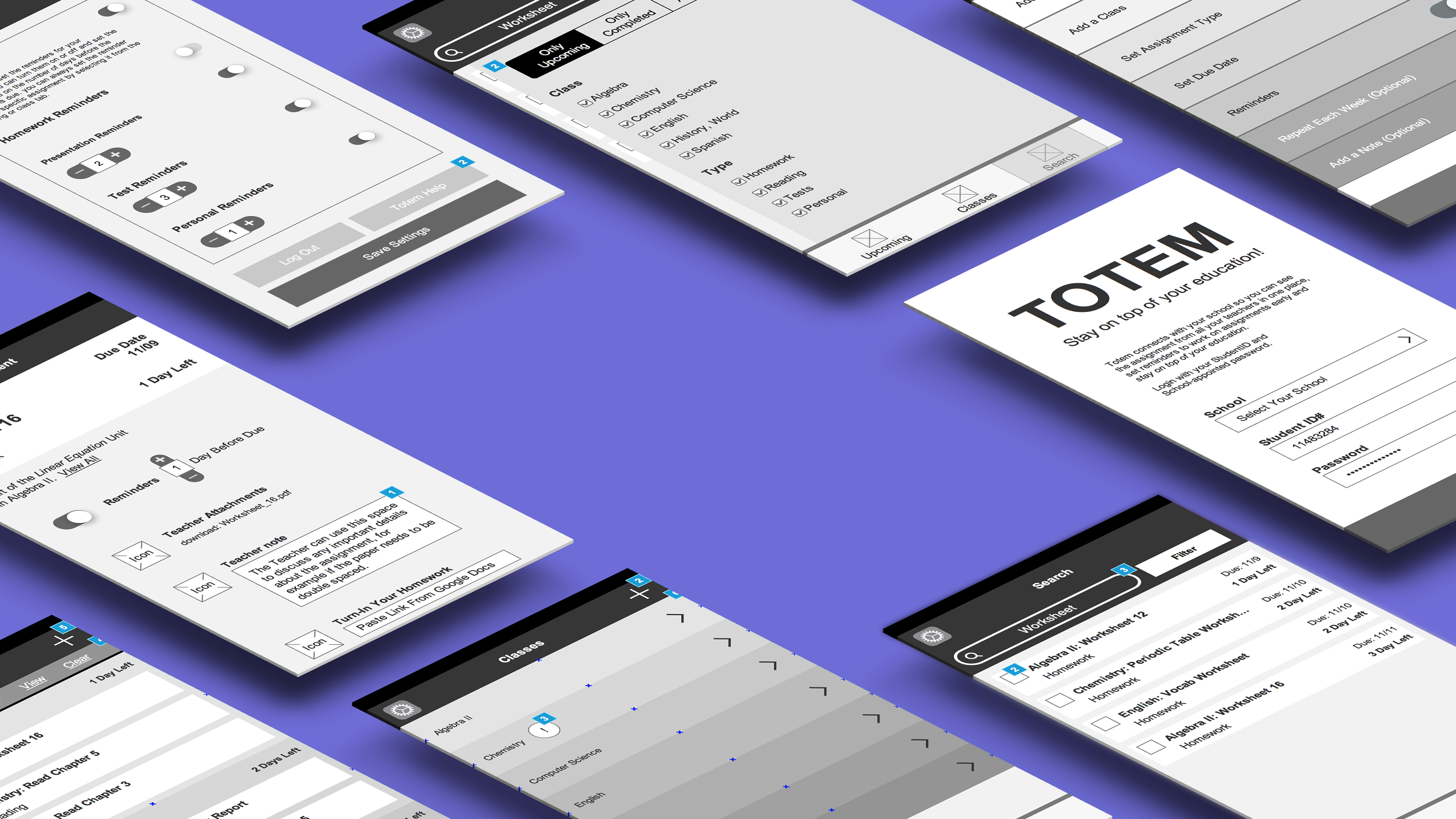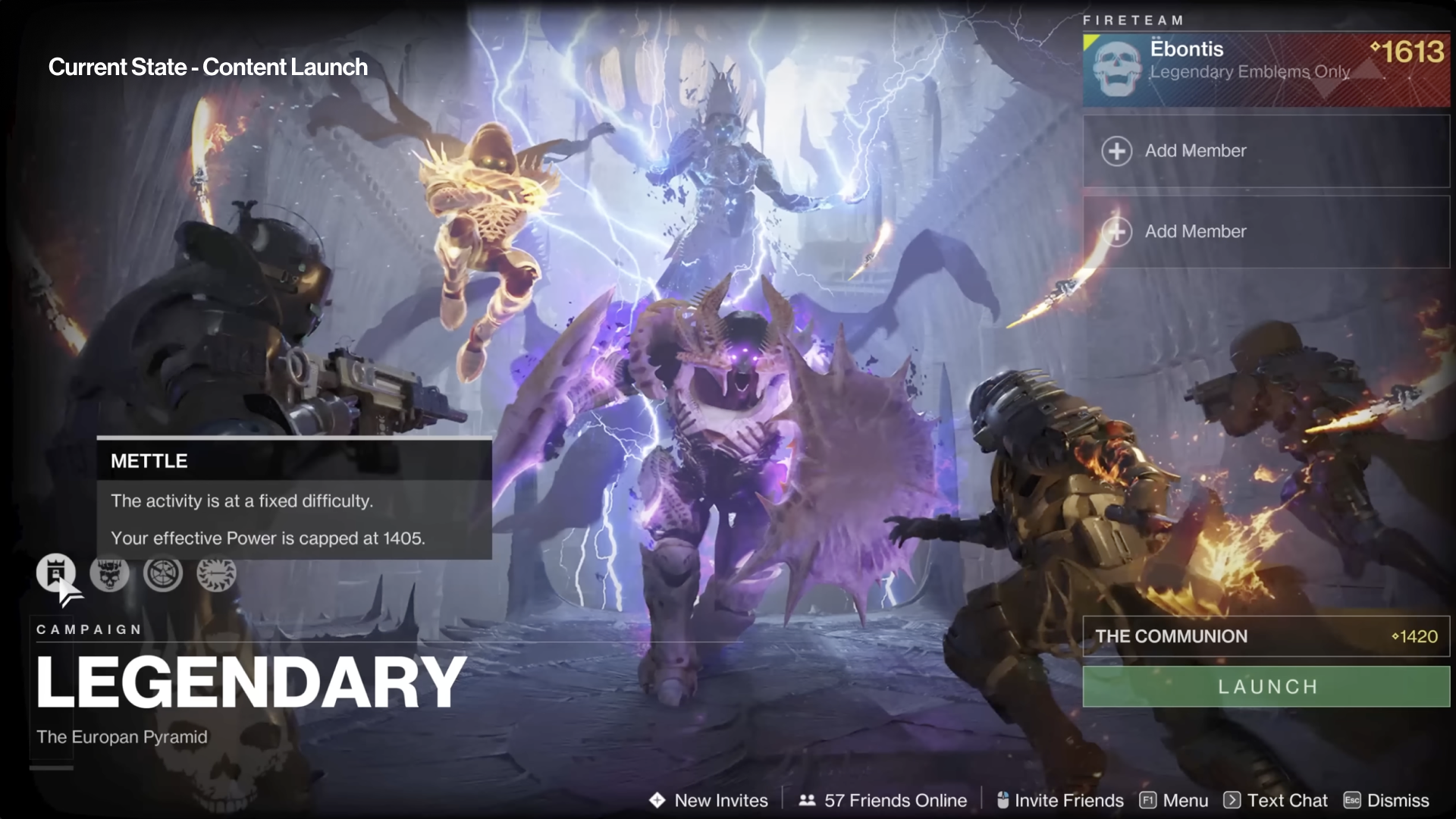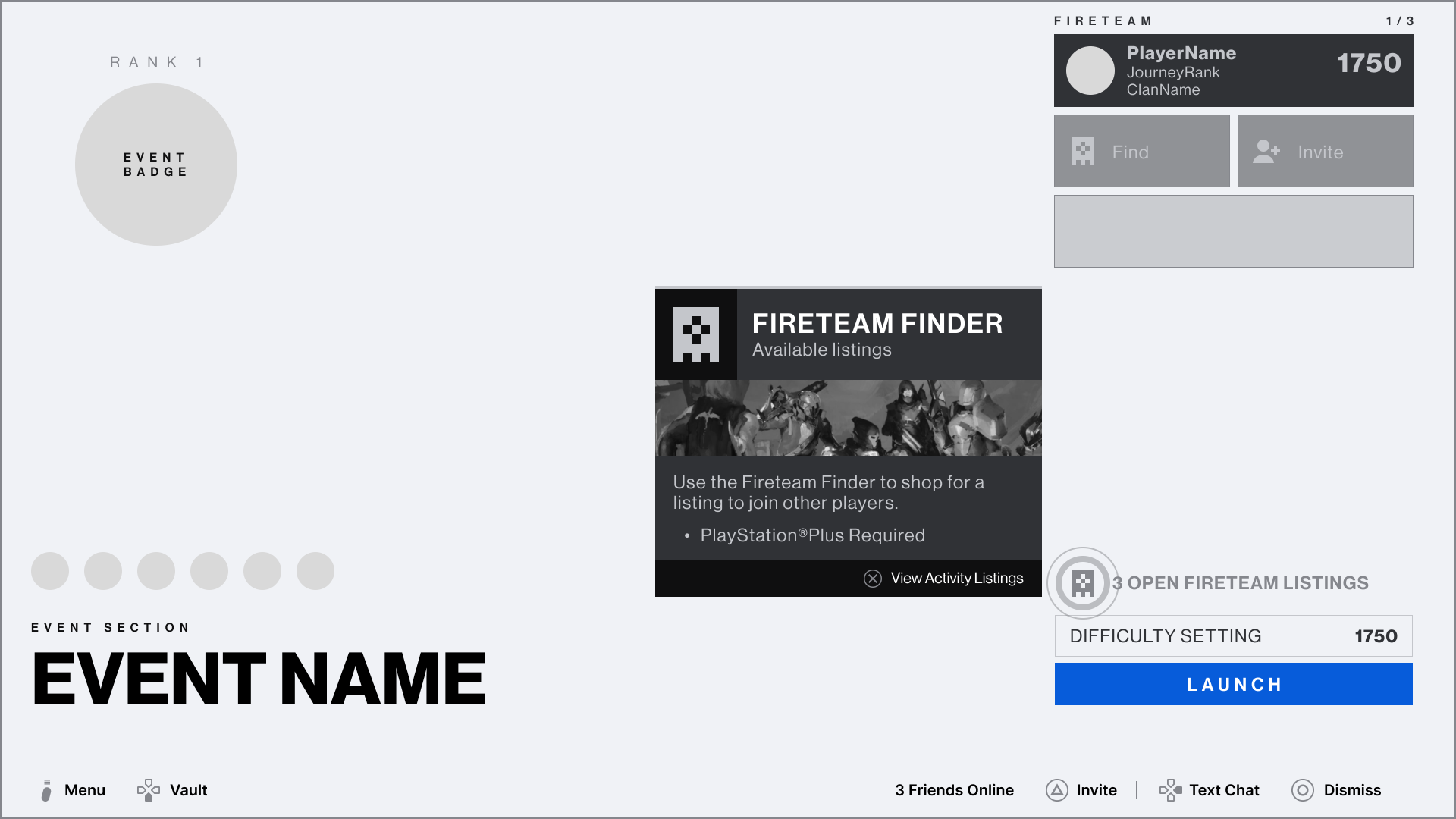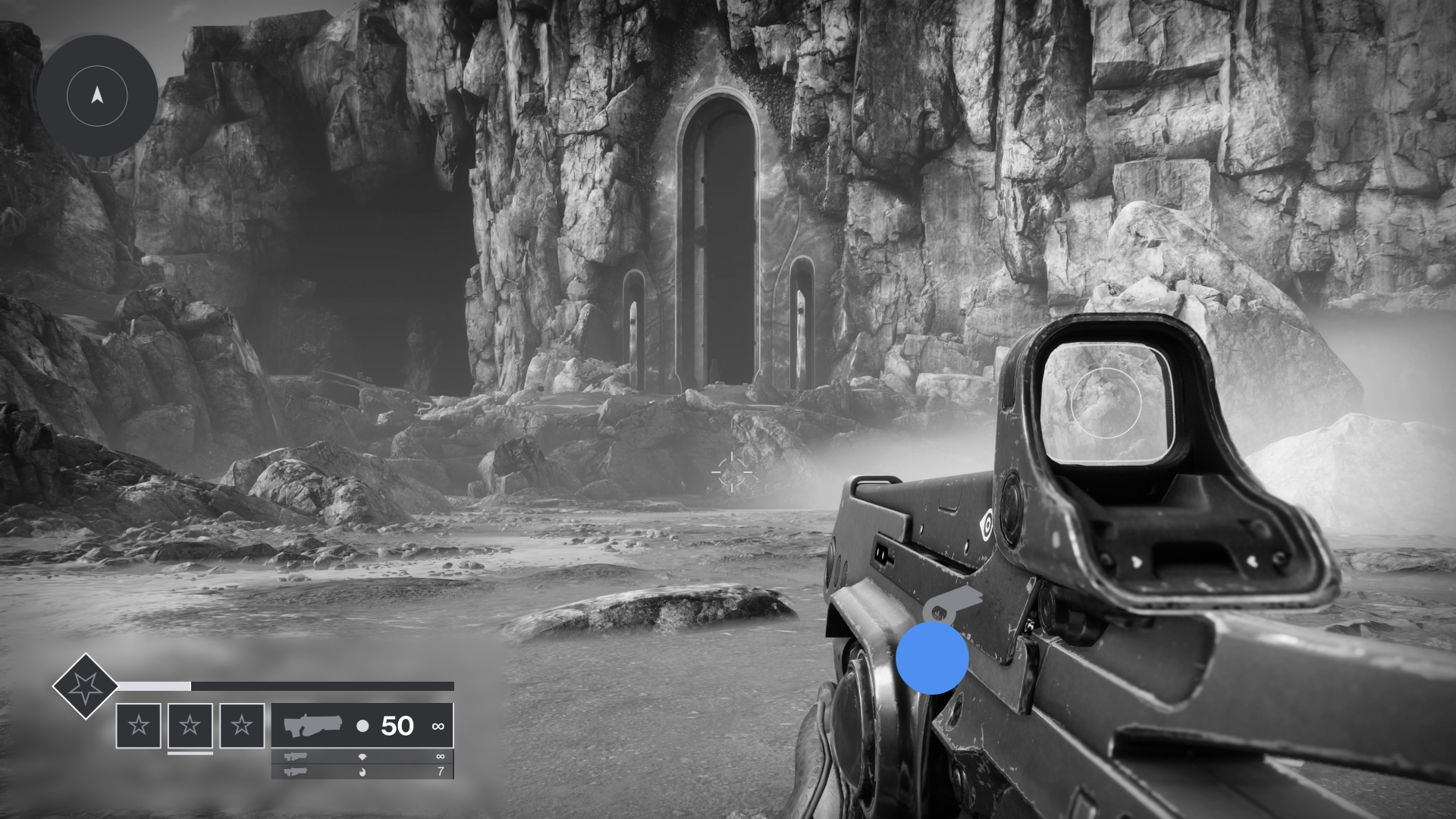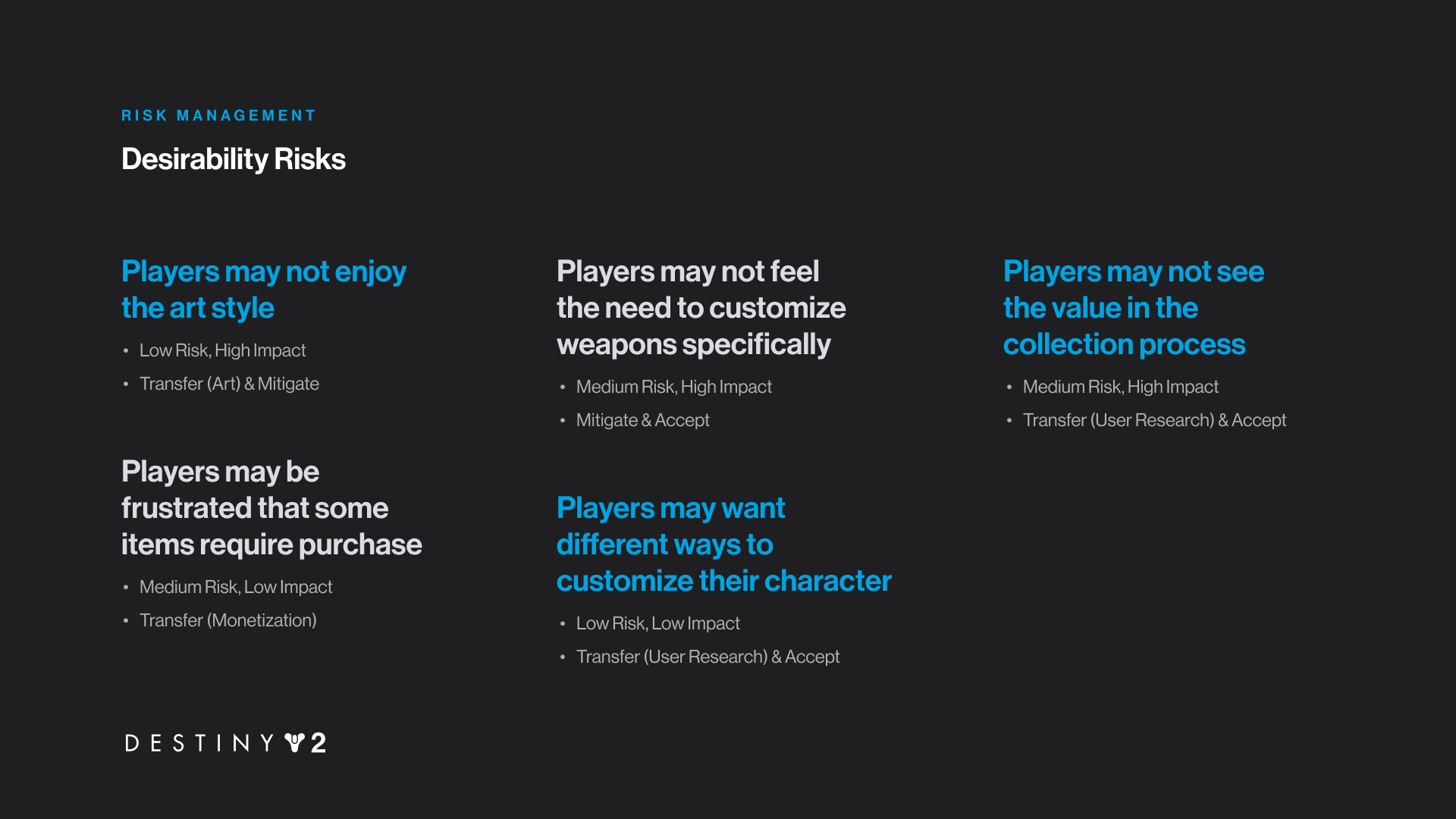Destiny 2
Exploring Improvements to Engagement and Retention
Skills Focus
> Heuristic Analysis
> Product Strategy
> Info Architecture
> UX Design
01 —
About Project
Destiny 2 is an established game with a heavy emphasis on their live service model, showing years of success. Our team reviewed the current experience and discovered opportunities to ramp up engagement and offer new and player-friendly models of monetization.
— 02 —
Approach
Project Role: Senior UX Designer
Timeline: 6 Weeks
• Analyzed existing experience to target areas of improvement
• Established goals and success metrics for final experience
• Designed baseline user flows and wireframes for further execution
— 03
Challenges
• Years of content have produced a dense UI that limits discoverability
• The maturity of the design makes non-disruptive exploration harder
• The parallax UI and cursor interaction model require unique scalability
• Wide disparity between end-game vs. new/returning players experience

Social Improvements
Destiny 2 has recently released two very successful features:
Fireteam Finder
Replaces a number of 3rd party tools, bringing them in-game and giving tens of thousands more players access to team-based play in all content.
Cross-Play
Players on all platforms can group, allowing friends to play together for the first time. Especially true for players returning from long breaks.
By analyzing the overall Destiny Experience our team saw an opportunity to expand on these features to provide a better experience for the unique challenges of new and returning players.
Heuristic Analysis
Target Player Personas
Improvement Vision
Players find friends & Fireteams faster
Players should have multiple entry points to Fireteam Finder and key information should be found in context.
Players can learn the new systems easily
Use the knowledge of where the player is in menus or what recent invites they’ve received to navigate them more quickly to their next action.
Unify and improve social UI
Take a systematic approach to raise the quality of interfaces and menus for connecting players.
Proposed Solution
We broke our solution into easily scalable chunks. This allowed us to more closely collaborate with producers and engineers to prioritize improvements based on both impact and feasibility. Through a workshopping process we arrived at an improvement roadmap.

Wireframes
Weapon Customization
After considering how player might engage with the social features we also needed to consider solo players and their needs.
One place the current design over-focuses on multiplayer users is in cosmetics. Analysis showed an opportunity to explore player customization that has high value for solo players.
Why do players want customization?
• Identification: Setting up their character to represent themselves or their tribe
• Expression: Designing their character to show their personal style or fashion
• Social Equity: Players desire to peacock for other players
• Immersion: Connecting the character closer to the in-game world
How does Destiny 2 support customization?
How do players experience the game?
How do players experience customization?
Competitive Analysis
Competitors have found more innovative ways of letting players customize elements of their first-person experience.
Valorant
The Finals
Halo Infinite
Experience Vision
User Flow
Wireframes
Risk Analysis
Outcomes
• Together these two improvements address a wide range of the player base
• Weapon customization opens both a new gameplay chase and monetization path
• Set the stage for deeper exploration by a cross-functional team
Learning and Growth
This project was a case study as part of an advanced UX/UI in gaming class taught by Ivy Sang, Lead Designer at Blizzard. This was critical for me in understanding the differences between traditional product design and the uniques needs of UX design in games. While many of the core heuristics of interaction design carry over, the much greater focus on desirability and narrative, layers of feedback, and focus on game loops create unique and fun design challenges.
